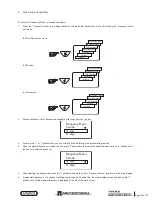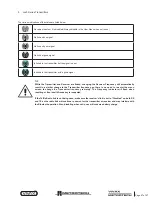
™
Page 63 of 67
6 Using the Accessories
4. If the signal is a steady level and does not rise and fall, this is probably not the target cable.
WARNING
The remote stethoscope antenna is a useful tool to help trace cables. However, it should not be used
as positive identification before an unused cable is cut. Always follow company procedures when
cutting unused or isolated cables.
6.4 Using the SD Signal with the Remote Antenna to help trace a particular
cable
The Remote Antenna is also capable of detecting SD signals. SD is described earlier in section 4.11.
Method:
1. Apply the signal using the direct connection method. Remember to isolate the cable beforehand as below. It is also
preferable to use the ground stake as an independent ground. Using the station ground may result in multiple signals as
the signal will return along commonly bonded cables.
2. Select an SD signal from the transmitter (either SD-USA or SD-EUR).
3. Connect the remote antenna accessory to the locator and place it on the red lead of the transmitter with the arrow pointing
away from the transmitter and with the flats of the antenna along the line of the cable.
4. Select the frequency using the “f” button so that it matches the selection on the transmitter. The screen should look similar
to the picture below.
53.1
SD-EUR
95dB
4G
5. If necessary adjust the sensitivity so that the bar graph is on the scale. Note that the green arrow is pointing forwards, this
indicates that the signal is flowing forward. If the arrow was red and pointing backward as below, it will be necessary to
perform an SD reset before proceeding. However, if in doubt always perform the reset to be sure the antenna and receiver
are synchronized.








































